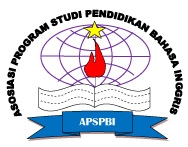- Home
- Vol 3, No 1 (2021)
- Zulfa
TEACHERS WAY OF COMMUNICATIONS WITH STUDENTS IN CONTENT AND LANGUAGE INTEGRATED LEARING (CLIL) CLASSES
Wafa Dwi Zulfa, Mursidah Rahmah, Deddy Sofyan
Abstract
The fact of learning a language that is not our own, opens the mind. One of the most important language in the world is English. English has become the most used language of communication. Teacher as the facilitator need to support the learning environment in the classroom effectively. It has created the dire need to explore new teaching methodology that can increase learners command of foreign language. Content and Language Integrated Learning (CLIL) is a method that is used to develop the proficiency both target language and content, it can help students to be mastering their foreign language and content from other subjects beside English. This research is aimed to investigate teachers way for communication with students in CLIL classes. This research was conducted at SMP-SMA Cahaya Rancamaya Islamic Boarding School. There were 2 participants involved in this research, which were Physics and Biology teachers who used CLIL as the teaching and learning method. The writer used qualitative method and descriptive analysis in conducting this research. To gain the research data, she used three research instruments: documentation, interview and interview. Documentation instrument was used to analyze teachers CLIL lesson plans. Two interviews also conducted to confirm and avoid misunderstanding. Both interviews were conducted online because of the Covid-19 situation. This study reveals that teachers way for communication with students in CLIL classes happened in the three stages of classroom activities which are in pre-activity, while activity and post-activity. The communication aspect in the CLIL classroom used English as the medium in the interaction. Teachers ways of communication with students influenced by the classroom activities and questioning techniques which are Conceptual Checking Question (CCQ) and instructional Checking Question (ICQ) to make students participate to communicate which will affect the English communication in the CLIL classroom.
References
REFERENCES
Sharliz, A.A. (2017). Classroom in English Speaking Class: A Naturalistic Study at Quen Education Course Karanganyar. Universitas Muhammadiah Surakarta, Indonesia.
Coyle, D; Hood, P. and Marsh, D (2010). CLIL (Content and Language Integrated Learning). Cambridge University Press.
Cortacans, P. (2013). Speaking in the CLIL Classroom: to What Extent Do Teachers and Students use English in the Classroom. Facultat dEducació, Traducció i Ciències Humanes Universitat de Vic
Coyle, D; Hood, P. and Marsh, D (2010). CLIL (Content and Language Integrated Learning). Cambridge University Press
Full Text:
PDF
DOI:
10.55215/jetli.v3i1.3417

Abstract views : 586

views : 447
Refbacks
- There are currently no refbacks.
Copyright (c) 2021 JETLi | Journal of English Language Teaching and Linguistics Studies

This work is licensed under a
Creative Commons Attribution-NonCommercial-ShareAlike 4.0 International License.
 Abstract views : 586
Abstract views : 586




